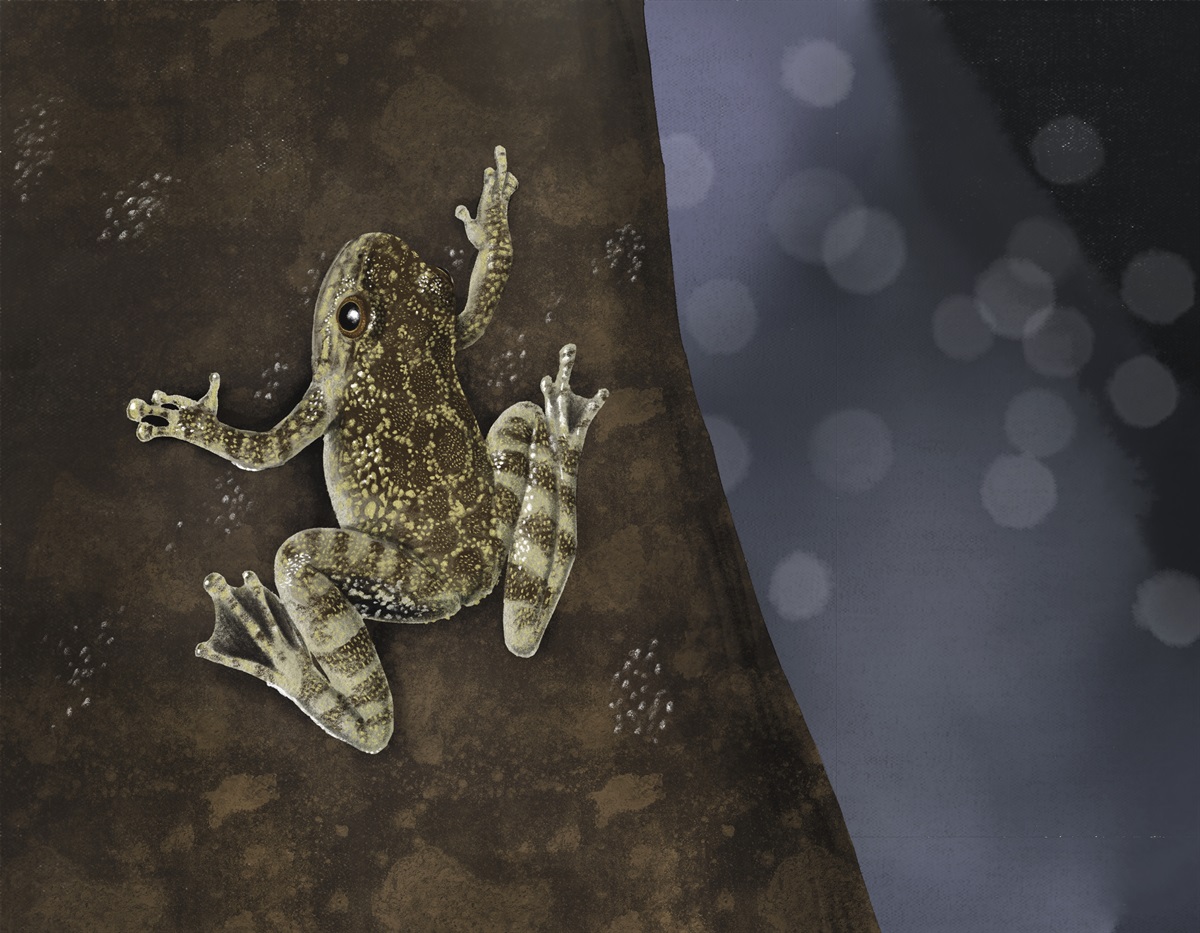Among the 23 species of native frogs, Hong Kong Cascade Frog is the only one named after Hong Kong. It was first discovered in Tai Mo Shan in 1950 and then described as a species new to science in 1951. The species was later found to also occur in southern Guangdong.

Hong Kong Cascade Frog may not be the most eye-catching frog but is unquestionably a courageous one. This species loves taking challenges. It is found typically in fast flowing mountain streams. In addition to its strong legs, the frog has developed webbed toes with suction discs to provide a secure grip as it leaps and climbs through the slippery rocks amidst waterfalls and rapids. Its flat body and head is another key feature that allows the frog to lay close and hold tight onto the stream rocks without being washed way.
Females of Hong Kong Cascade Frog lay their eggs on rocks beneath waterfalls. This way, the egg clutches, each contains some 12 to 60 milky white eggs, can be stuck to rock surfaces that are hidden away from the direct sunlight. The hatched tadpoles also have strong tails and suckers at their abdomens to help them propel against strong currents and adhere firmly to rock surfaces respectively. Hong Kong Cascade Frog is one great example of how animals can evolve and adapt to survive in the harsh environments.
| Family | Ranidae |
|---|---|
| Scientific Name | Amolops hongkongensis |
| Adult Size | About 5 cm in length |
| Habitat | Fast-flowing mountain streams |
| IUCN Red List Status | Endangered |
